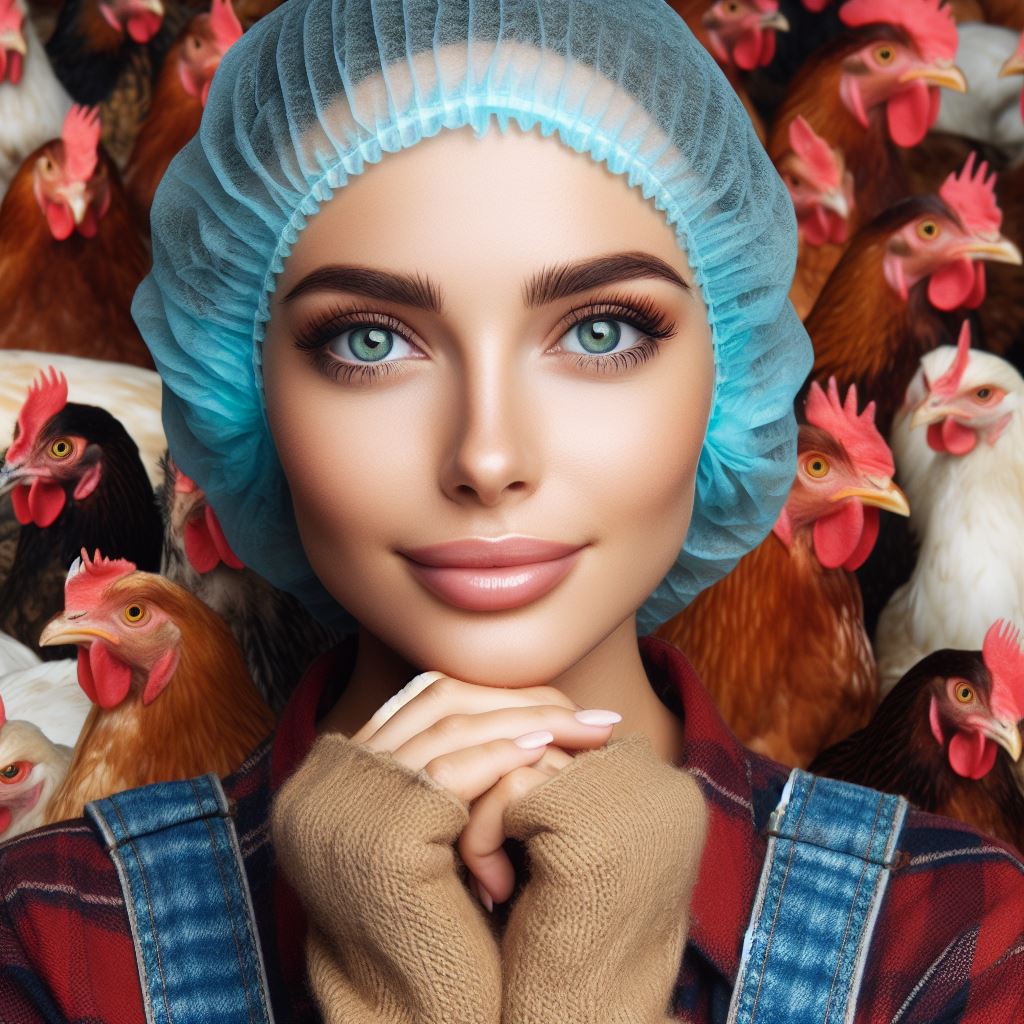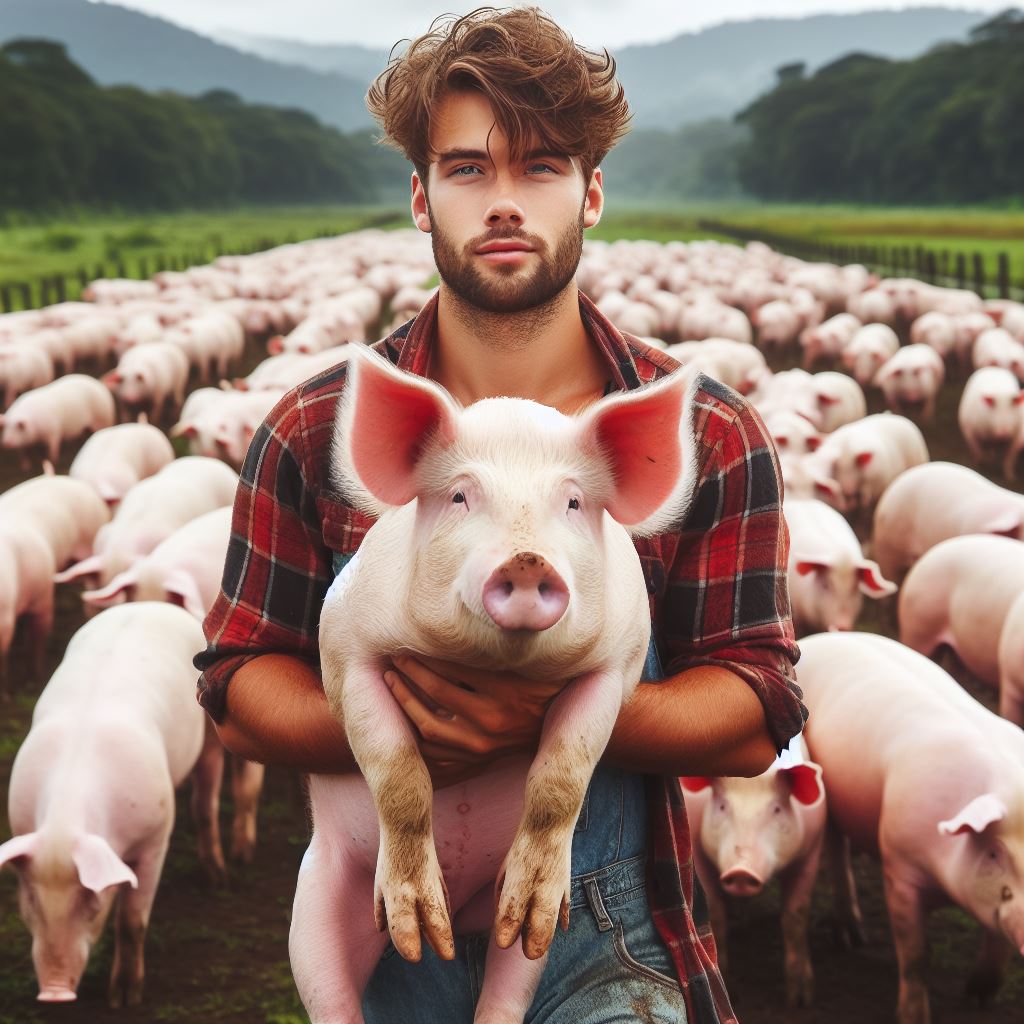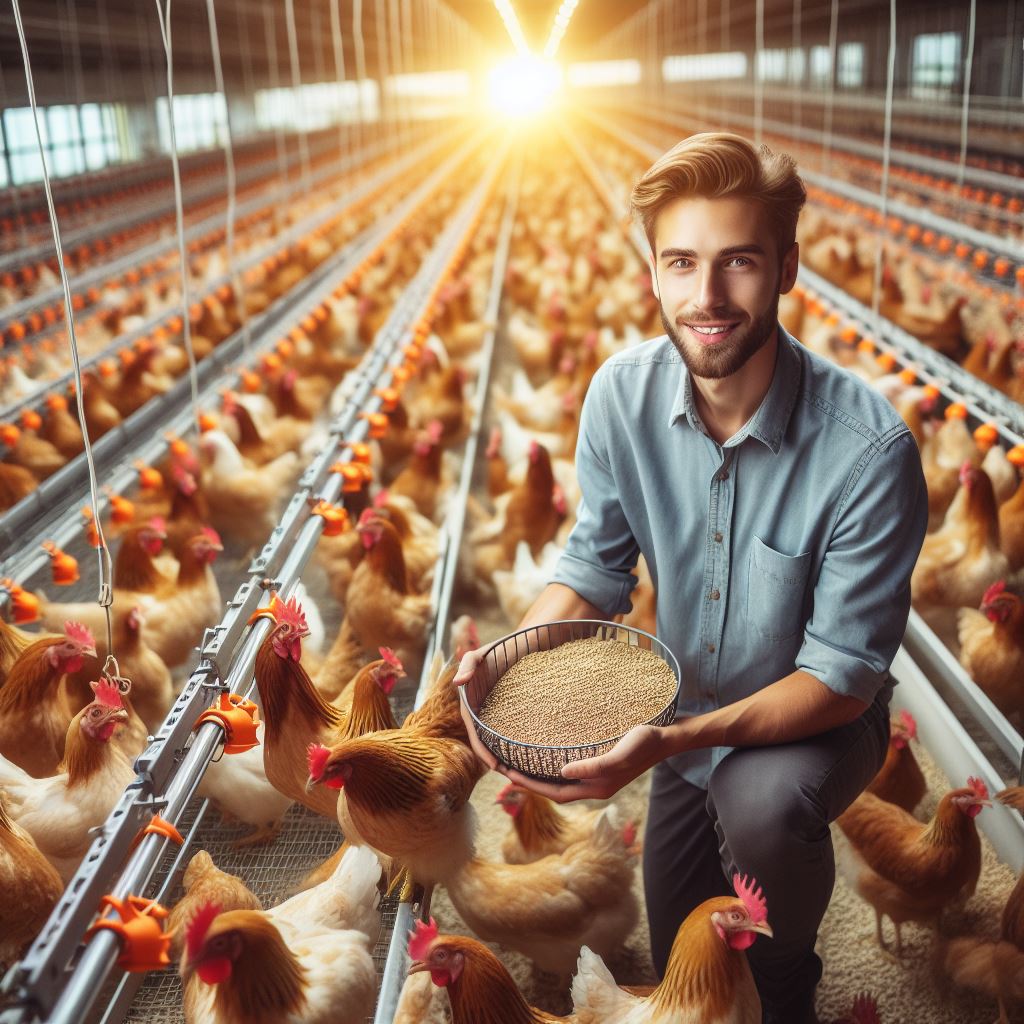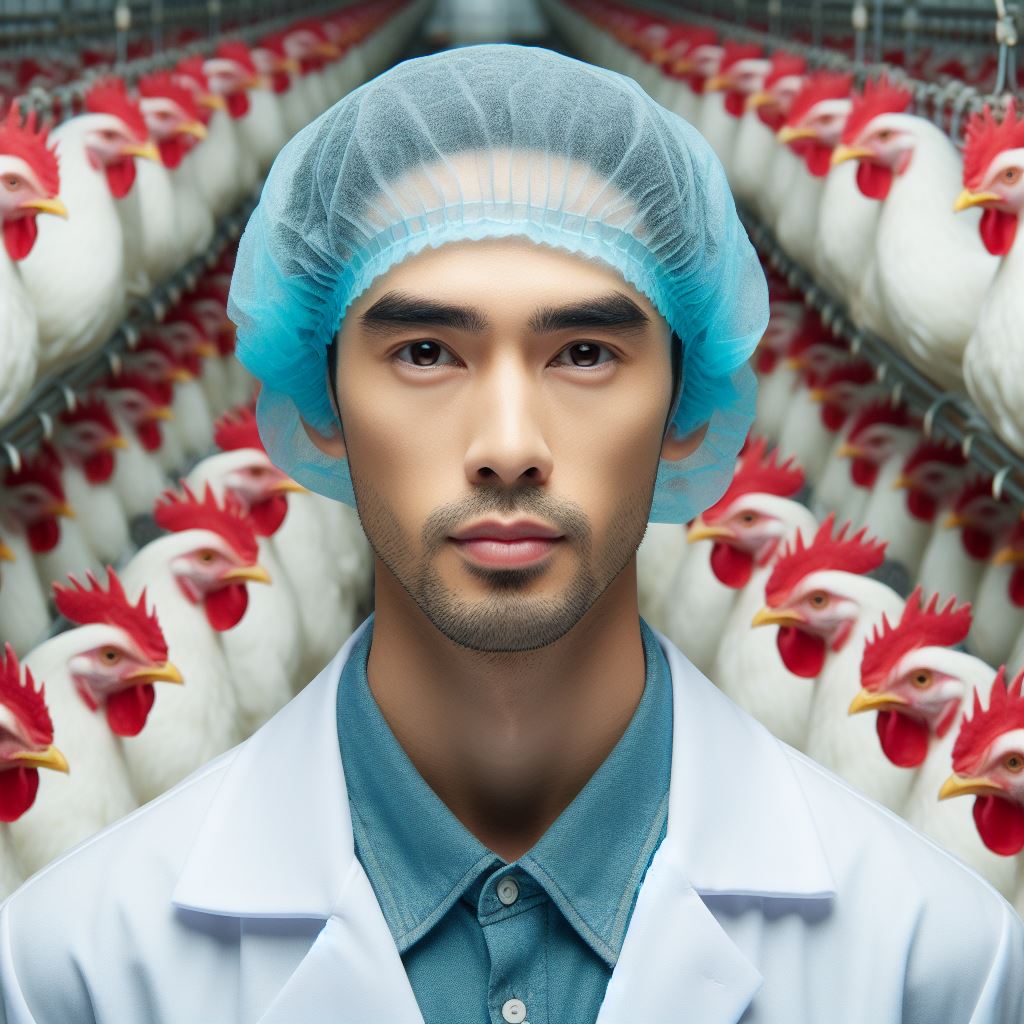Introduction
Let’s explore Dairy Cow Breeding Milk Production.
Milk production plays a vital role in the dairy industry as it is a major source of revenue.
Dairy cow breeding plays a crucial role in enhancing milk production by improving genetics and productivity.
The demand for milk and dairy products has been consistently increasing over the years.
As a result, milk production has become essential for the sustainability of the dairy industry.
Dairy cow breeding is a significant aspect of milk production enhancement.
By selectively breeding cows with desirable traits, such as high milk yield and good health, farmers can improve the overall productivity of their herds.
One of the primary goals of dairy cow breeding is to increase milk yield per cow.
This is achieved by breeding cows with high milk-producing genetics, which can significantly impact the profitability of dairy farms.
Moreover, dairy cow breeding also focuses on improving the quality of milk produced.
By selecting cows with superior genetic traits, such as high protein and fat content, farmers can ensure that the milk meets the desired standards.
In addition to quantity and quality, dairy cow breeding also plays a role in enhancing the reproductive efficiency of cows.
By breeding cows with good fertility traits, farmers can reduce the calving interval and increase the number of calves born per cow over her lifetime.
Overall, dairy cow breeding is crucial for enhancing milk production in the dairy industry.
It helps farmers improve productivity, meet the growing demand for milk, and ensure high-quality dairy products.
Transform Your Agribusiness
Unlock your farm's potential with expert advice tailored to your needs. Get actionable steps that drive real results.
Get StartedThrough strategic breeding programs, the dairy industry can continue to meet the needs of consumers while maintaining sustainable farming practices.
Understanding dairy cow breeding
Definition of dairy cow breeding
Dairy cow breeding refers to the controlled process of mating dairy cows to achieve desired traits in offspring.
The purpose of dairy cow breeding
The purpose of dairy cow breeding is to improve milk production capacity and overall herd quality.
The selection criteria for breeding cows
Selection criteria for breeding cows include:
- Genetic potential: Cows with superior genetics for milk production and other desirable traits are selected.
- Health and fertility: Cows should have good health and reproductive abilities, ensuring successful breeding and healthy offspring.
- Conformation: Physical structure and body conformation are important to ensure proper udder development and milk production.
- Temperament: Cows with docile and calm temperaments are preferred to facilitate handling and minimize stress.
- Pedigree and lineage: Cows with proven ancestry of high milk production and good genetics are preferred.
Breeding cows with these criteria in mind helps dairy farmers build a productive and efficient herd.
To begin the breeding process, farmers typically use artificial insemination, where semen from carefully selected bulls is inserted into the cow’s reproductive tract.
This method allows for precise control over the genetic makeup of the offspring and offers access to elite genetics.
Before breeding, cows undergo regular health checks and are monitored for signs of heat, indicating they are ready for mating.
Farmers observe behavioral changes such as increased activity and mounting behavior.
Once a cow is confirmed in heat, careful timing is crucial for successful breeding.
Artificial insemination is typically performed within a specific window, around 12 to 18 hours after the start of estrus.
After insemination, cows are closely monitored for signs of pregnancy, usually through ultrasound or veterinary examination.
Successful breeding results in pregnancies, leading to the birth of calves.
Female calves are typically kept as replacements in the herd, while male calves may be sold or raised for meat.
Breeding strategies can also involve the use of advanced reproductive technologies such as embryo transfer and in-vitro fertilization.
These techniques offer the opportunity to multiply the superior genetics of highly productive cows.
Additionally, genetic testing and genomic selection have become powerful tools for identifying desired traits in cows at an early age.
These technologies allow farmers to accurately predict the genetic potential of young animals and make informed decisions about breeding and culling.
Most importantly, dairy cow breeding plays a vital role in enhancing milk production and overall herd quality.
By carefully selecting cows with superior genetics, good health, and desirable traits, farmers can build a productive and efficient herd.
The use of artificial insemination, advanced reproductive technologies, and genetic testing further contributes to the success of dairy cow breeding.
Read: Optimal Goat Feed: Balancing Nutrition and Health
Methods to Enhance Milk Production through Breeding
When it comes to dairy cow breeding, enhancing milk production is a top priority for farmers.
There are several methods and strategies that can be employed to achieve this goal:
Showcase Your Farming Business
Publish your professional farming services profile on our blog for a one-time fee of $200 and reach a dedicated audience of farmers and agribusiness owners.
Publish Your ProfileSelecting High Milk-Producing Cows as Parent Stock
- Choosing cows with a proven track record of high milk production as parents is essential.
- This ensures that the offspring inherits the genetic potential for producing large quantities of milk.
- Thorough evaluation of the cow’s milk production history and performance is crucial in this process.
Breeding for Desirable Milk Production Traits
- In addition to selecting high milk-producing cows, breeding for specific traits related to milk production is equally important.
- These traits include increased milk yield, improved milk quality, and higher butterfat and protein content.
- Breeding programs should prioritize these traits to maximize milk production in the offspring.
Utilizing Genetic Selection Tools and Technologies
- Advancements in genetic selection tools and technologies have revolutionized dairy cow breeding.
- DNA testing and genomic selection allow farmers to identify and select animals with superior genetic potential.
- These tools help in breeding decisions by providing accurate predictions of an animal’s milk production abilities.
Importance of Genetic Diversity in Breeding Programs
- While selecting high milk-producing cows is crucial, maintaining genetic diversity within breeding programs is equally vital.
- Using a diverse range of sires helps in avoiding inbreeding and the associated genetic abnormalities.
- Genetic diversity leads to healthier and more adaptable cow populations, ultimately enhancing milk production.
Overall, enhancing milk production through breeding requires a comprehensive approach.
Selecting high milk-producing cows as parent stock, breeding for desirable milk production traits, utilizing genetic selection tools, and maintaining genetic diversity are all vital components of successful dairy cow breeding programs.
By employing these methods, dairy farmers can ensure the generation of offspring with outstanding milk production potential.
Read: Best Feed Types for Beef Cattle: A Nutritional Guide
Factors influencing milk production in dairy cows
In order to enhance milk production in dairy cows, it is important to consider several factors that can significantly impact the quantity and quality of milk.
These factors include nutrition, health management, and environmental conditions.
Nutrition: the role of proper diet in milk production
One of the key factors influencing milk production in dairy cows is nutrition.
A proper and balanced diet is crucial for maximizing milk yield.
Cows require a diet that is rich in energy, protein, vitamins, and minerals.
Feeding cows with high-quality forage, such as alfalfa or grass, can improve milk production.
Additionally, providing cows with a well-formulated concentrate feed that includes grains and oilseeds can enhance their overall nutritional intake.
Regular access to fresh and clean drinking water is also essential for optimal milk production.
Cows should have unlimited access to water throughout the day to maintain their hydration levels.
Health management: the impact of cow health on milk production
The health status of dairy cows plays a significant role in their milk production capabilities.
Health issues can result in reduced milk yield, poor milk quality, and increased susceptibility to diseases.
Regular veterinary check-ups and preventive healthcare measures, such as vaccinations and deworming, can help maintain the overall health of dairy cows.
Early detection and treatment of diseases, such as mastitis, can prevent further complications and ensure continuous milk production.
Furthermore, farmers should implement proper hygiene practices, including clean and comfortable bedding, regular cleaning of the milking equipment, and sanitary conditions in the milking parlor.
These measures can minimize the risk of infections and improve milk quality.
Environmental factors: the effect of housing, climate, and stress levels on milk production
Environmental conditions also play a crucial role in milk production.
The housing system, climate, and stress levels can significantly influence the productivity of dairy cows.
The housing environment should provide cows with adequate space, good ventilation, and comfortable resting areas.
Proper housing design can prevent heat stress, injuries, and reduce the risk of diseases, ultimately promoting higher milk production.
Climate conditions, such as extreme heat or cold, can affect feed intake, metabolism, and overall cow comfort.
Adequate shelter, ventilation systems, and adjustment of feeding strategies during extreme weather conditions are important to ensure optimal milk production.
Stress levels, including social stress, transportation stress, or changes in routine, also impact milk production.
Minimizing stressors and providing a calm and stable environment can help cows maintain their productivity.
Essentially, to enhance milk production in dairy cows, it is essential to prioritize nutrition, health management, and environmental factors.
A well-balanced diet, proper healthcare, and optimal housing conditions can greatly contribute to maximizing milk yield and ensuring the well-being of dairy cows.
Read: Duck Health Management & Disease Control
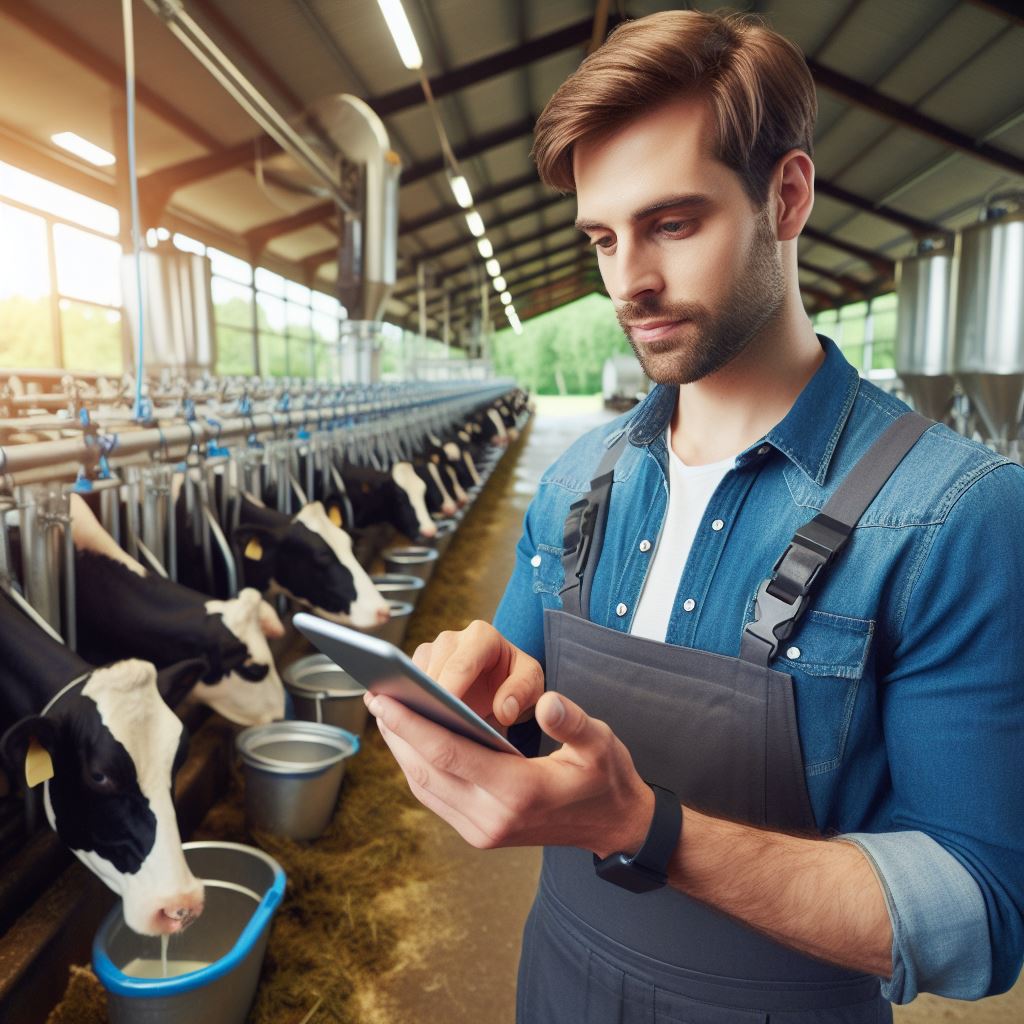
Challenges and limitations in dairy cow breeding
When it comes to dairy cow breeding, there are several challenges and limitations that breeders need to be aware of.
These challenges can have a significant impact on milk production and overall herd health.
Let’s explore some of the common challenges and limitations in dairy cow breeding:
Genetic disorders and potential health issues
- One of the challenges in dairy cow breeding is the presence of genetic disorders.
- Genetic disorders can cause health issues in cows, leading to reduced milk production.
- Breeders need to be cautious and select cows with low genetic disorder risk.
- Regular health check-ups and screenings are necessary to identify potential health issues.
- By addressing genetic disorders, breeders can enhance milk production and herd health.
Balancing milk production with other desirable traits
- Milk production is a crucial factor in dairy cow breeding, but it’s not the only one.
- Breeders need to balance milk production with other desirable traits like fertility and longevity.
- Focusing solely on milk production can lead to a decline in overall cow health and productivity.
- Selective breeding techniques can help strike a balance between different desirable traits.
- Breeders aim to create a balanced genetic profile that maximizes milk production while promoting cow welfare.
The cost and time involved in breeding programs
- Implementing a successful dairy cow breeding program can be costly and time-consuming.
- Breeders need to invest in high-quality genetics, breeding technologies, and professional expertise.
- Monitoring and maintaining the breeding program requires considerable commitment and dedication.
- There is a significant time lag between breeding decisions and seeing the actual results.
- Breeders must have a long-term vision and patience to see the benefits of their breeding efforts.
Ultimately, dairy cow breeding is not without its challenges and limitations.
Genetic disorders and potential health issues can hamper milk production and cow welfare.
Balancing milk production with other desirable traits is crucial for long-term success.
However, breeders must be prepared for the investment of both time and money that breeding programs require.
Despite the challenges, with careful planning and the right strategies, breeders can overcome these limitations and enhance milk production in their herds.
Read: 3 Top Smart Feeders for Efficient Cattle Rearing
Gain More Insights: Best Forage Plants for Healthy Pastures
Showcase Your Farming Business
Publish your professional farming services profile on our blog for a one-time fee of $200 and reach a dedicated audience of farmers and agribusiness owners.
Publish Your ProfileFuture trends in dairy cow breeding
Advances in genetic technologies and their potential impact on milk production
Rapid advancements in genetic technologies have revolutionized the dairy cow breeding industry.
These technologies have the potential to greatly enhance milk production by identifying and selectively breeding cows with desirable genetic traits.
Genomic selection is one such advancement that allows breeders to assess the genetic potential of an animal even before it is born.
By analyzing DNA samples, breeders can predict an individual cow’s milk production, disease resistance, and other important traits.
This technology not only accelerates the breeding process but also enables breeders to make informed decisions about which cows to breed, ensuring desirable traits are passed on to the next generation.
Sustainable breeding practices to minimize negative environmental impacts
Furthermore, sustainable breeding practices prioritize the use of natural resources, such as water and energy, to ensure long-term environmental sustainability.
Another emerging trend in dairy cow breeding is the focus on sustainable practices to minimize negative environmental impacts.
As the dairy industry faces increasing scrutiny for its contribution to global greenhouse gas emissions, breeders are exploring ways to reduce the industry’s carbon footprint.
One approach is to breed cows that consume less feed while maintaining high milk production.
By selecting for genetic traits associated with improved feed efficiency, breeders can minimize the environmental burden of dairy farming.
Focus on animal welfare and ethical breeding practices
In addition to environmental considerations, there is also a growing emphasis on animal welfare and ethical breeding practices in the dairy industry.
Consumers are becoming more concerned about the treatment of animals, and this trend is driving changes in breeding practices.
Breeders are now placing greater importance on factors such as cow comfort, health, and longevity.
By selecting for genetic traits associated with strong immune systems, disease resistance, and high fertility, breeders can promote the overall well-being of dairy cows.
Ethical breeding practices also involve avoiding harmful genetic defects, such as those that lead to poor health or reduced productivity.
By minimizing the occurrence of such defects, the industry can ensure the production of healthy and productive cows.
Moreover, ethical breeding practices include responsible breeding techniques, ensuring that animals are not subjected to unnecessary stress or harm during the breeding process.
Most importantly, the future of dairy cow breeding is likely to be shaped by advances in genetic technologies, sustainable breeding practices, and a focus on animal welfare and ethical breeding practices.
These trends have the potential to greatly enhance milk production while minimizing negative environmental impacts and promoting the overall well-being of dairy cows.
Conclusion
Dairy cow breeding plays a vital role in enhancing milk production and ensuring a sustainable dairy industry.
The importance of this practice cannot be overstated, as it directly affects the quantity and quality of milk produced.
Continuous research and innovation in the field are necessary to improve breeding techniques and genetic selection.
By understanding and utilizing the latest scientific advancements, dairy farmers can optimize milk output, reduce production costs, and improve animal health and welfare.
However, the future of dairy cow breeding holds even greater potential.
As technology continues to advance, there is scope for further improvement in breeding methods, such as genomic selection and assisted reproductive techniques.
These advancements can lead to the development of cows with even higher milk-producing capacities and enhanced disease resistance.
Additionally, the implications of dairy cow breeding extend beyond individual farms.
The increased milk production resulting from improved breeding techniques can contribute to meeting the growing global demand for dairy products.
It can also enhance food security and help lift communities out of poverty, especially in developing countries heavily reliant on dairy farming.
Nevertheless, it is essential to approach breeding practices responsibly, taking into consideration factors like animal welfare, genetic diversity, and environmental sustainability.
Striking a balance between productivity and ethical considerations is crucial for the long-term success and acceptance of dairy cow breeding.
In the end, dairy cow breeding will continue to play a pivotal role in meeting the increasing demand for milk and sustaining the dairy industry.
By embracing ongoing research and innovation, the industry can further enhance milk production, improve animal welfare, and contribute to global food security.

